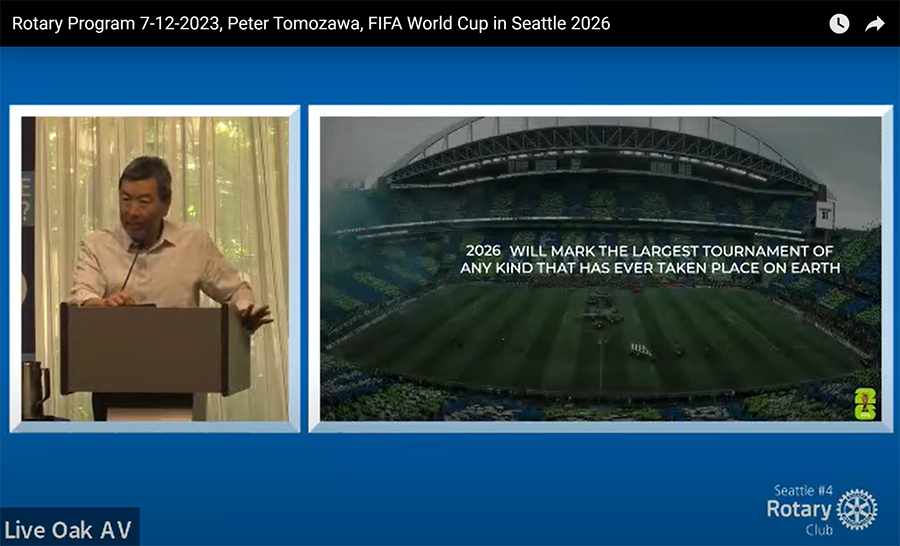By Ruth Bayang
NORTHWEST ASIAN WEEKLY
Peter Tomozawa, the president of Business Operations for Seattle Sounders FC, was a key figure in the bid to bring the FIFA World Cup 2026 to Seattle.
At a Rotary Club of Seattle #4 meeting on July 12, he shared insights about the bid and the vision for hosting the World Cup in Seattle.
“People have no idea how big this thing is,” he said. Tomozawa said Seattle is expected to host between four to six matches in a 10 to 14 day period.
“Each match is a Super Bowl-sized event.” He added that the World Cup audience is six times larger than the Super Bowl, and is 14% larger than the Olympics. The quarter-finals alone drew an audience of 800 million worldwide.
Tomozawa addressed the Rotary Club a day after Seattle hosted the MLB All-Star Game. Since then, concerns have been raised about the lack of economic benefits reaching the Chinatown-International District (CID), despite the CID’s proximity to the event. Matt Chan, an advocate for the neighborhood, told the Seattle Times that despite the massive crowds in other areas, foot traffic dwindled as visitors bypassed the CID. Business owners in the area reported no significant increase in revenue, despite initial expectations that the event would bring $50 million in economic activity to the city.
Asian Weekly staff walked around the CID in the days and the weekend leading up to the All-Star Game and noticed diminished foot traffic, which is unusual especially during a summer weekend. And because of the CID’s proximity to T-Mobile Park, fans also took up the free and cheaper parking spots in the CID—a steal compared to the up to $150 parking fees charged around the stadium.
When asked about economic opportunities for immigrant and minority owned businesses, Tomozawa said that economic development is one of the highest priorities—second in fact, after safety.
“I will feel it as a personal failure if we don’t do that,” he said—meaning maximize the economic benefit of the World Cup.
“I’ve already talked to the waterfront business association about getting ready. We will have, at the Fan Festival, opportunities to have food trucks and other types of things where we can feature local businesses.”
He spoke of the World Cup’s mission and vision—to “foster a lasting legacy for our region, guided by the spirit of soccer, innovation and inclusion.”
Tomozawa said he has been in contact with King County Executive Dow Constantine about the completion of the light rail expansion in time for the World Cup making transportation more accessible.
The 1962 World’s Fair in Seattle left us with the iconic Space Needle. Tomozawa spoke on the World Cup’s legacy and said it will be “people-based”—specifically community, culture, and children.
He highlighted the host city supporters agreement with the Puyallup Tribe of Indians—marking the first time an indigenous people have entered into such an agreement with a host city. He also spoke of the RAVE Foundation, the charitable arm of Seattle Sounders FC, and its “26 Fields by 2026” campaign. Their goal is to build 26 soccer fields in historically marginalized communities throughout Washington by 2026, providing free soccer balls to children living within walking distance of each field, and investing in programs that support children’s health and wellbeing.
Community advocates say the lack of attention given to the CID during the All-Star game was a continuation of a historical pattern of neglect and encroachment on the neighborhood.
After Tomozawa’s talk, the Asian Weekly asked him one-on-one about community concerns.
He assured us that businesses in the CID will have the same opportunities as others during the World Cup, and that the CID—as a whole—will not be left behind.



